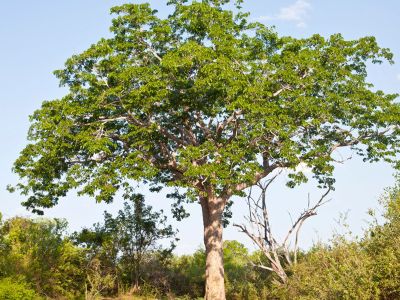Mahogany Tree Information
If you read information about mahogany trees, you’ll find them both interesting and attractive. The mahogany is a large, semi-evergreen tree with a canopy that casts dappled shade. It is a popular landscape tree in Southern Florida. Mahogany tree facts describe the trees as being very tall. They can grow 200 feet (61 m.) in height with leaves some 20 inches (51 cm.) long, but it’s more common to see them growing to 50 feet (15 m.) or less. Mahogany tree information suggests that wood is dense, and the tree can hold its own in strong winds. This makes it useful as a street tree, and trees planted in medians form attractive canopies overhead.
Additional Mahogany Tree Facts
Mahogany tree information includes a description of the blossoms. These heat-loving ornamentals produce small, fragrant clusters of flowers. The blossoms are either white or yellow-green and grow in clusters. Both male and female flowers grow on the same tree. You can tell male from female flowers because male stamens are tube-shaped. The flowers bloom in late spring and early summer. Moths and bees love the flowers and serve to pollinate them. In time, woody fruit capsules grow in and are brown, pear-shaped, and five inches (12.5 cm.) long. They are suspended from fuzzy stalks in winter. When they split, they release the winged seeds that propagate the species.
Where Do Mahogany Trees Grow?
“Where do mahogany trees grow?”, gardeners ask. Mahogany trees thrive in very warm climates. They are native to South Florida as well as the Bahamas and the Caribbean. The tree is also nicknamed “Cuban mahogany” and “West Indian mahogany”. They were introduced into Puerto Rico and the Virgin Islands over two centuries ago. Mahogany trees continue thriving in those places. Mahogany tree uses vary from the ornamental to the practical. First and foremost, mahogany trees are used as shade and ornamental trees. They are planted in backyards, parks, on medians, and as street trees. The trees are also raised and felled for their hard, durable wood. It is used to make cabinets and furniture. The species is getting increasingly rare and has been added to Florida’s endangered species list.
